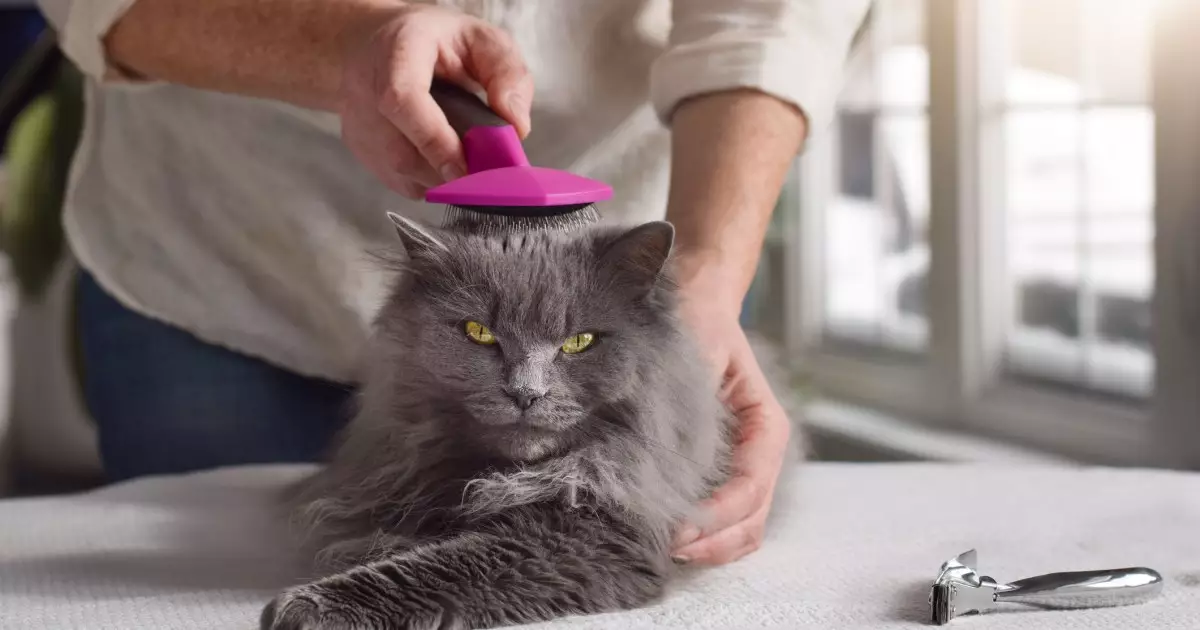Long-haired cats are often dream companions for pet lovers who appreciate beauty and elegance. Their flowing coats and gentle demeanor can turn a simple home into a cozy haven filled with warmth and affection. However, maintaining their luxurious fur requires effective grooming strategies to keep tangles at bay and ensure a healthy coat. This article provides an in-depth exploration of the grooming needs of long-haired cat breeds, emphasizing essential practices and a fundamental understanding of various fur types.
The texture and thickness of a long-haired cat’s coat significantly influence its grooming requirements. For example, breeds such as the Persian have famously thick and plush fur that tangles easily, necessitating daily grooming. Daily brushing is essential to avoid mats forming and to provide comfort for the feline as well. In contrast, the Turkish Angora features a long coat without the additional undercoat, resulting in minimal tangling and shedding. Such cats usually only require a weekly brush to keep their fur looking pristine.
Additionally, there are the Selkirk Rex cats, whose unique curly fur demands specific grooming techniques. Their curls, reminiscent of a Poodle’s coat, require a gentle touch with a comb several times a week. This variation in fur types informs pet owners about what tools and routines are necessary for each breed.
Equipping yourself with the right tools is fundamental to successful grooming. Cat-specific brushes and combs are designed to address the unique needs of feline fur. These tools can often be found in pet stores, or you can seek your veterinarian’s recommendations for the most suitable options. Engaging your long-haired cat in grooming rituals can be a bonding experience. Many cats respond positively and even enjoy the sensation of being brushed, highlighting the importance of using gentle, quality tools.
When starting grooming sessions, it is crucial to introduce the brush slowly. Allow your cat to sniff and become familiar with the tool before proceeding with the grooming process. Brush in the direction of the fur, which not only feels better for the cat but also helps with the natural flow of the coat.
Fostering a positive experience during grooming can turn a chore into cherished bonding time. Begin gradually by keeping the initial grooming sessions short, perhaps only a few minutes long. Offering treats and praise at the end of each session can help create a rewarding atmosphere for both you and your cat. Over time, you can extend grooming sessions to around 15 minutes. This gradual approach is beneficial for cats that may be timid or sensitive about being groomed.
Regular grooming has additional health benefits. Long-haired cats are more susceptible to hairballs, caused by excess fur ingested during self-grooming. Consequently, brushing your cat prevents this uncomfortable issue and protects their digestive tract.
While grooming plays a pivotal role, bathing may sometimes be necessary. Although many cats are hesitant when it comes to water, some breeds, like the Maine Coon, often enjoy warm baths. If you can normalize bathing during their early months, the process will become significantly easier. It’s essential to use warm water and cat-safe shampoos to ensure a pleasant experience.
However, if your long-haired friend develops mats in their fur, the situation demands immediate attention. Mats can be painful and may lead to skin problems if not properly addressed. Trimming the mats with cat-specific clippers is the recommended approach, avoiding scissors to prevent injury. For severe matt situations, consulting a professional groomer is fast and effective.
In addition to the fur on their bodies, long-haired cats can develop tufts of fur between their paw pads. These tufts can create discomfort, hampering a cat’s ability to walk or use the litter box. Paying attention to these areas and trimming the excess fur is vital to a cat’s comfort. Always take care to keep your trimming safe, ensuring not to cut into the pads themselves.
While the grooming of long-haired cats may seem formidable, it ultimately serves as an essential aspect of their care. Regular brushing not only enhances their physical appearance but also fosters a deeper bond between cat and owner, turning a potential chore into a cherished routine. By understanding each breed’s specific needs and patience, you can ensure that both you and your long-haired feline remain happy and healthy throughout your journey together.
